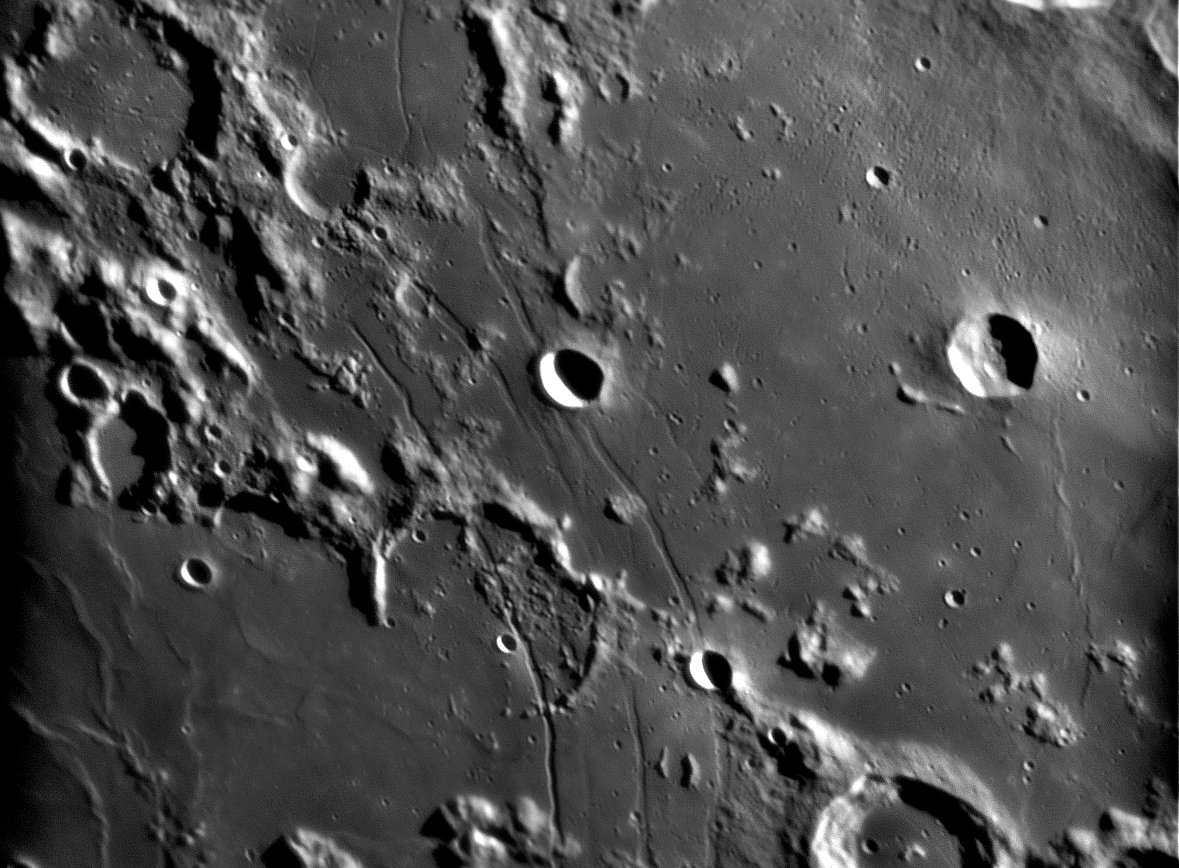 Image by Wes Higgins
Image by Wes Higgins
The standard of excellence for the Hippalus Rilles east of Mare Humorum is the now classic Stephen Keene image showing the area under grazing illumination. That is still the benchmark for low Sun imaging, but Wes’ recent view of the rilles achieves a new standard for higher angles of illumination. There are many stories to decipher from this image. At top right are closely aligned secondary craters from Bullialdus (just out of the image). These are not long secondary crater chains as seen at Aristillus but they are chain-like, and their distribution stops pretty abruptly. Individual small clusters of secondaries occur further from Bullialdus (entire right half of image). The three large Hippalus rilles are crisply deliniated, marking the bend where Humorum lavas tilt toward the basin center. To the north, within and near the crater Agatharchides, are delicate rilles known from Lunar Orbiter IV images but rarely seen from Earth. These rilles are narrower and shallower than the Hippalus rilles and not obviously related to sagging of the Humorum basin. A thorough study of the tectonics of this area is needed!
Technical Details:
April 8, 2006. 18″ Reflector, FL=9000mm, Infinity 2-1 camera, MAP processing, stack of 500 frames.
Yesterday's LPOD: Iss Over the Moon
Tomorrow's LPOD: Crater Chains and Unknown Rille
COMMENTS?
Register, Log in, and join in the comments.



